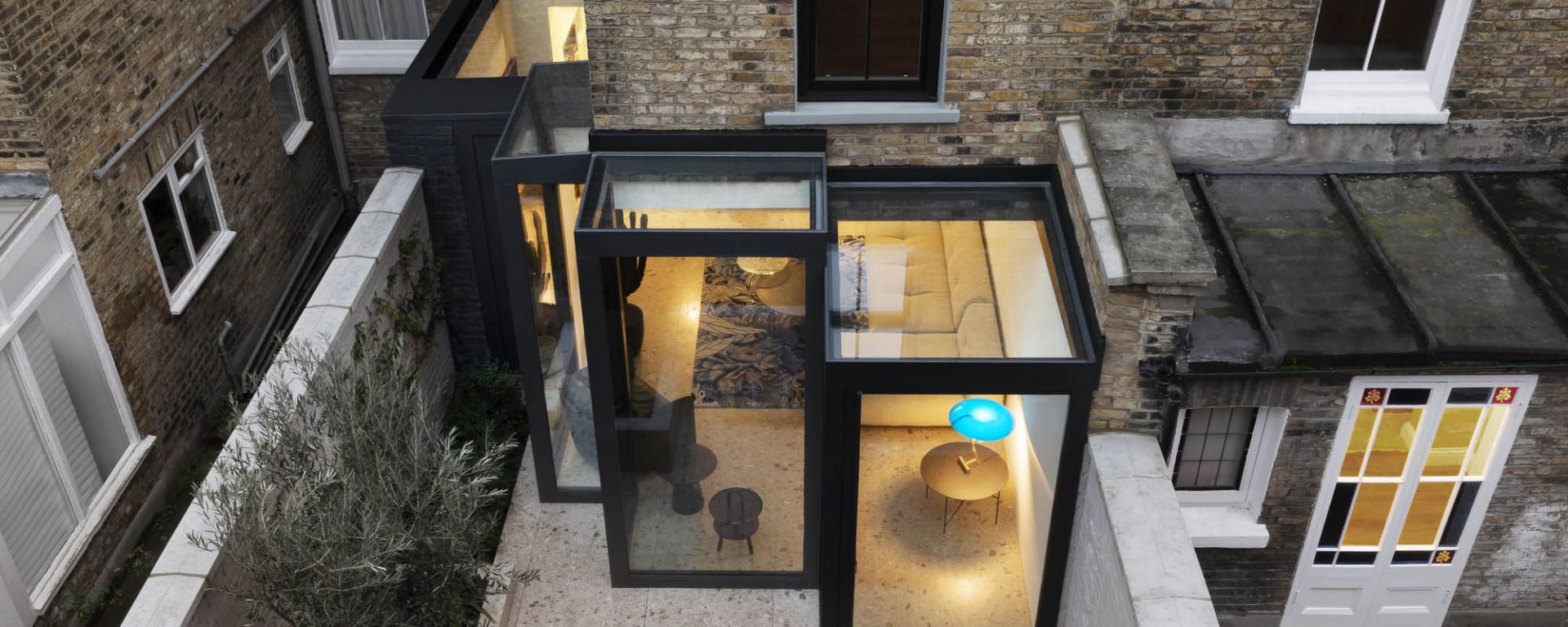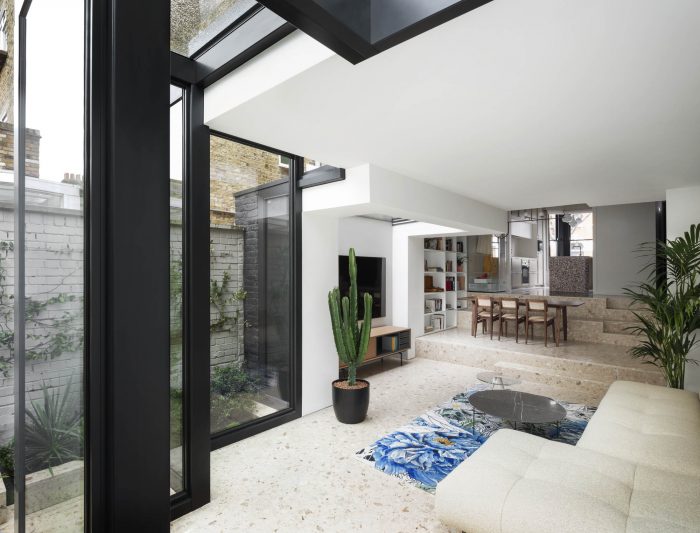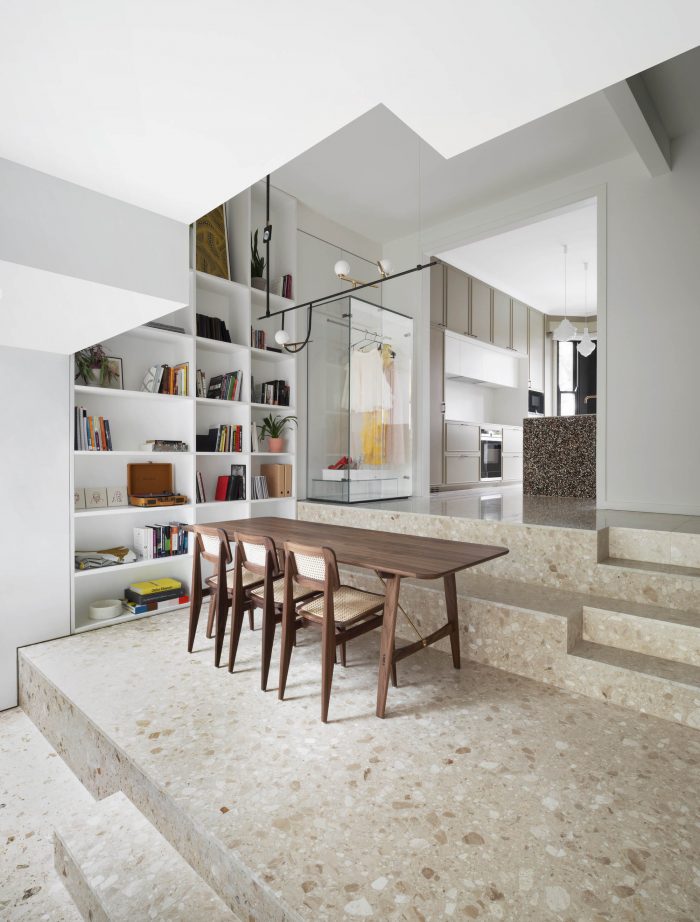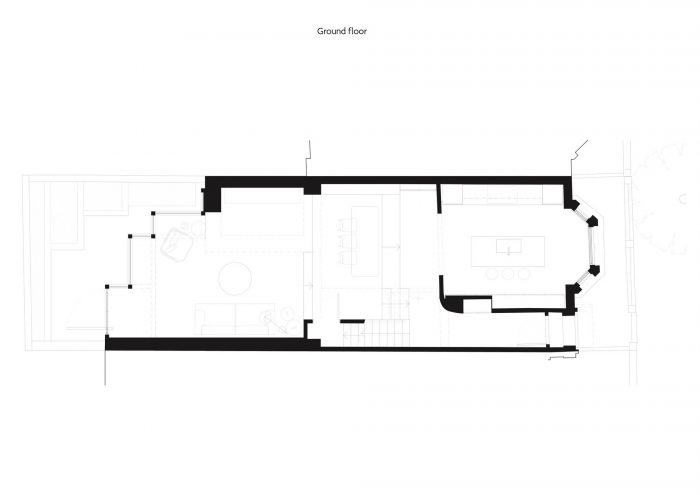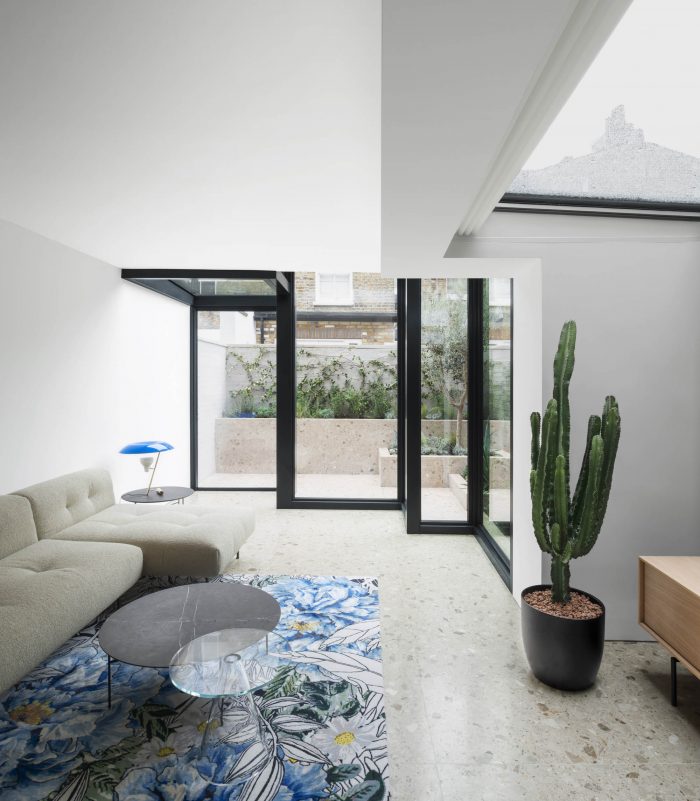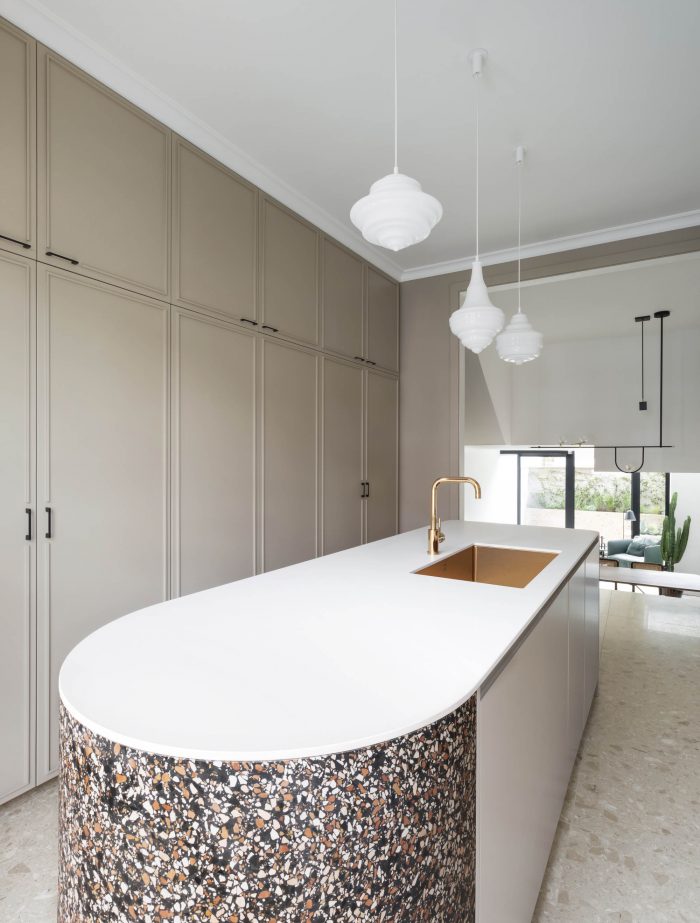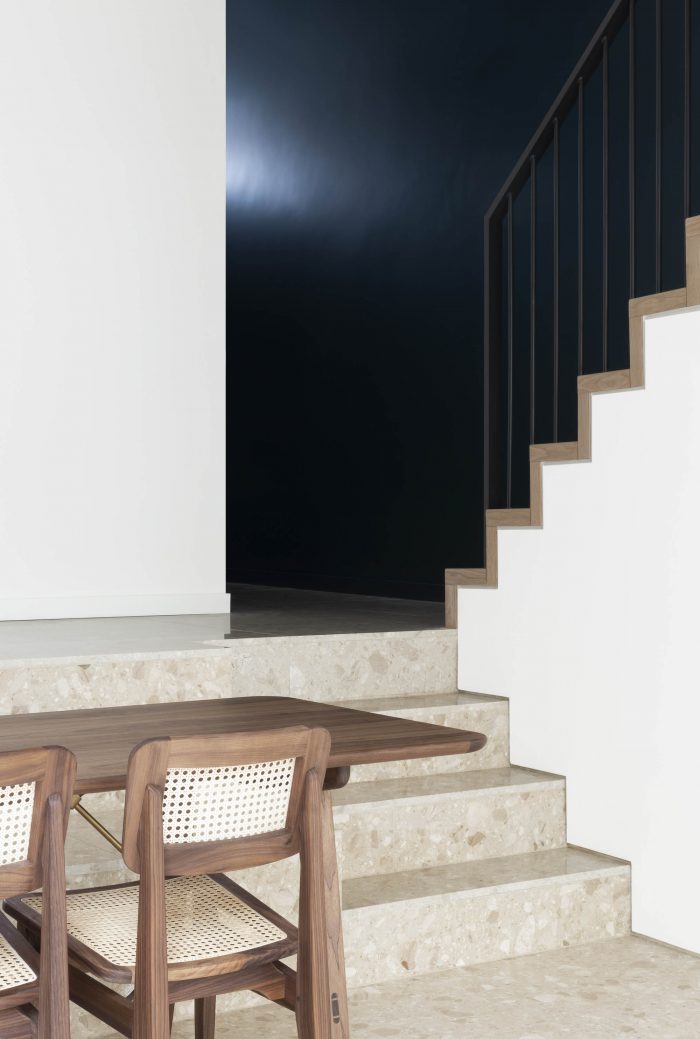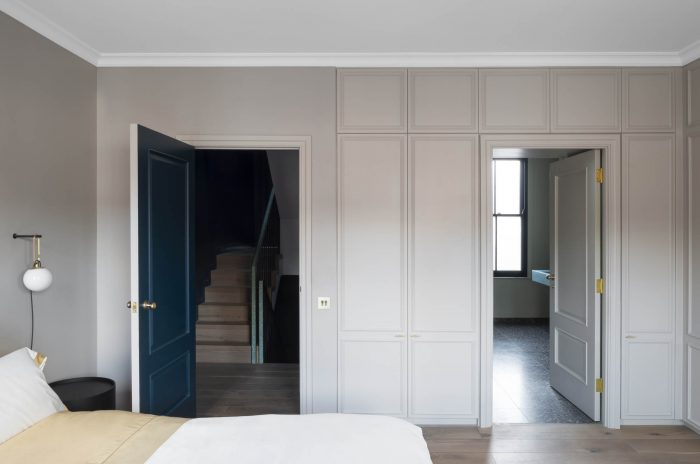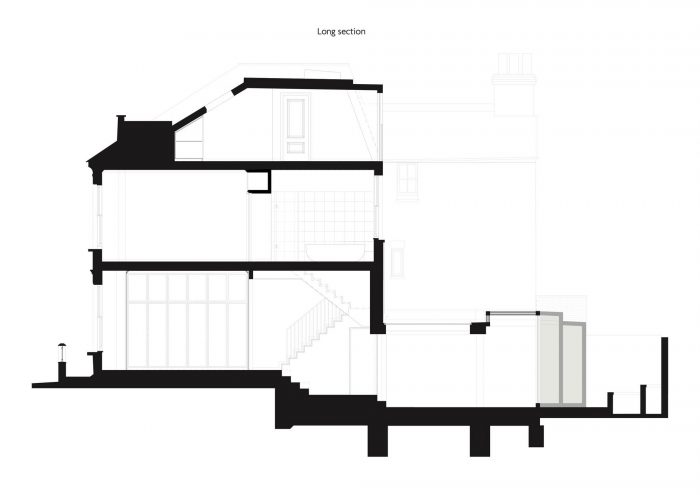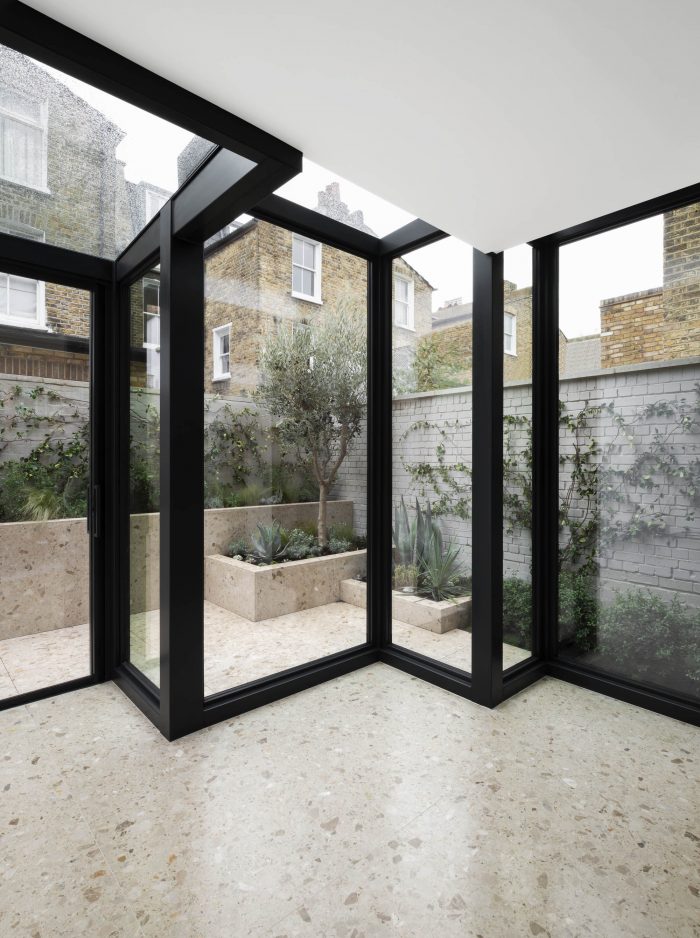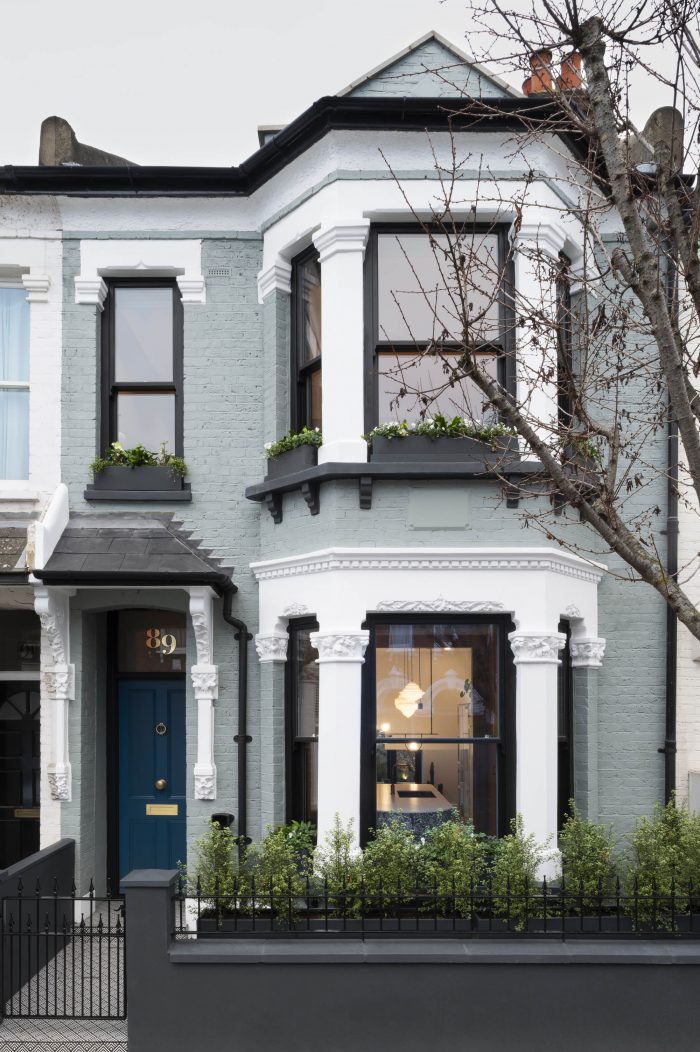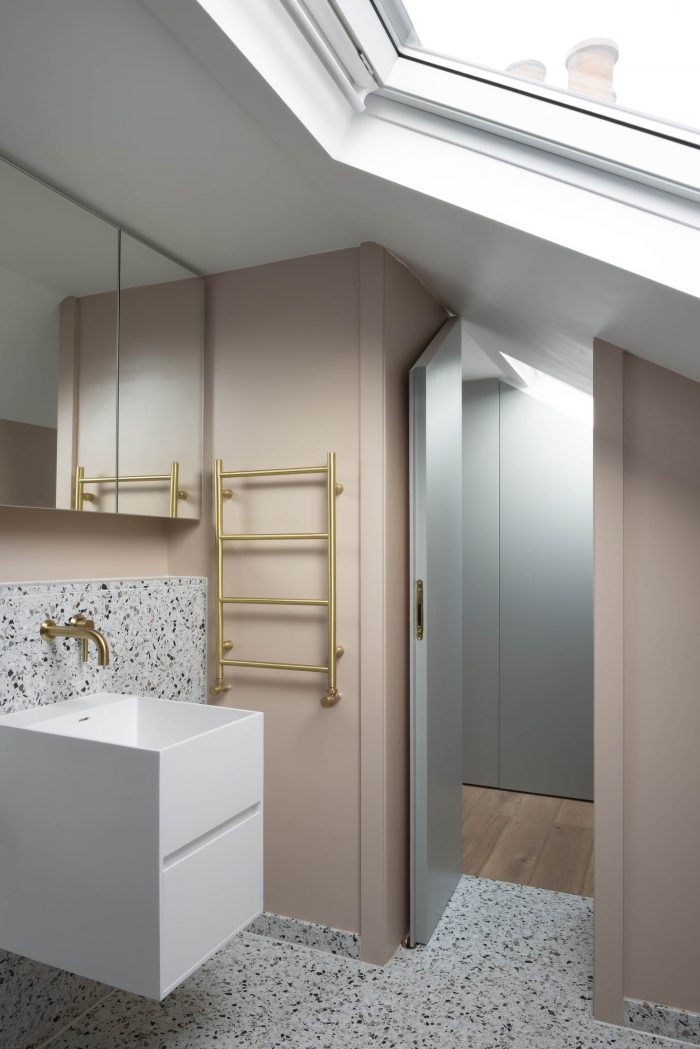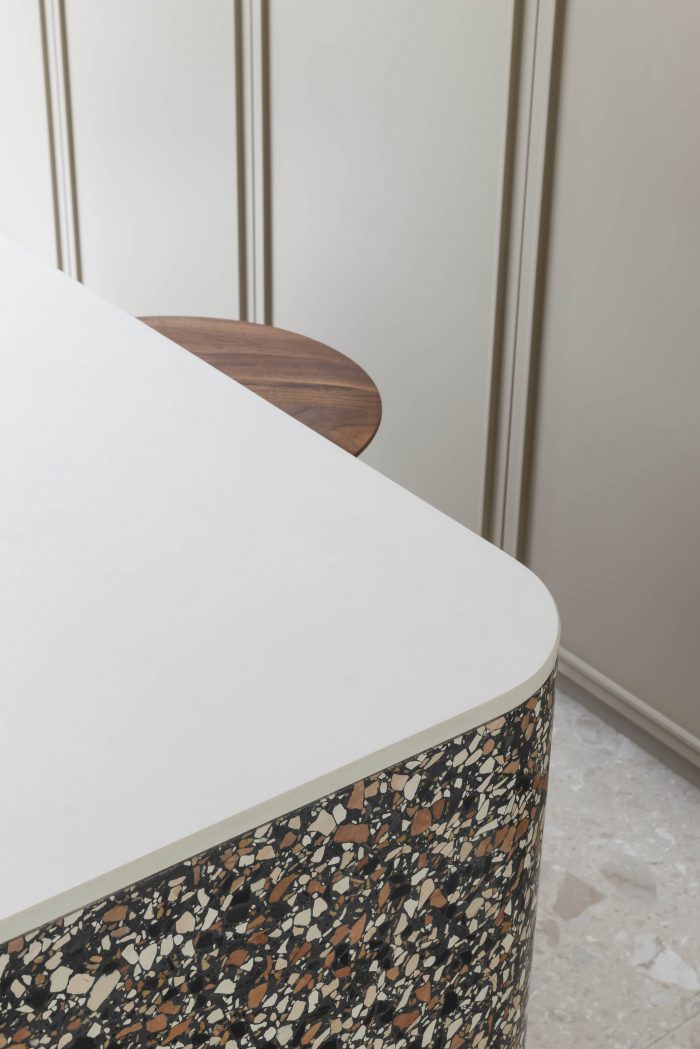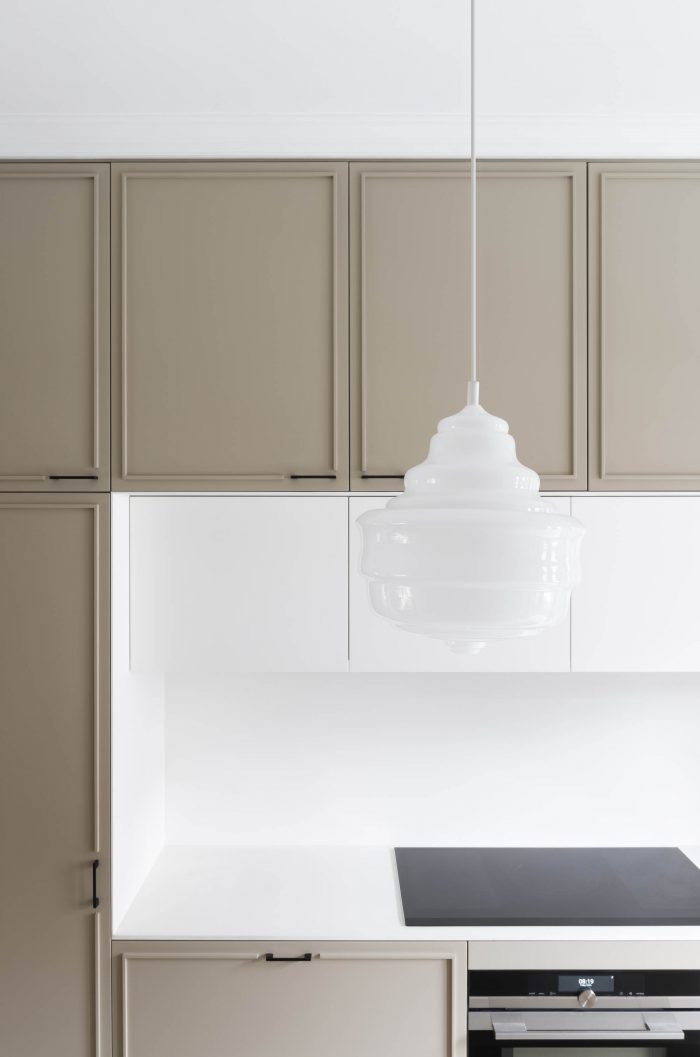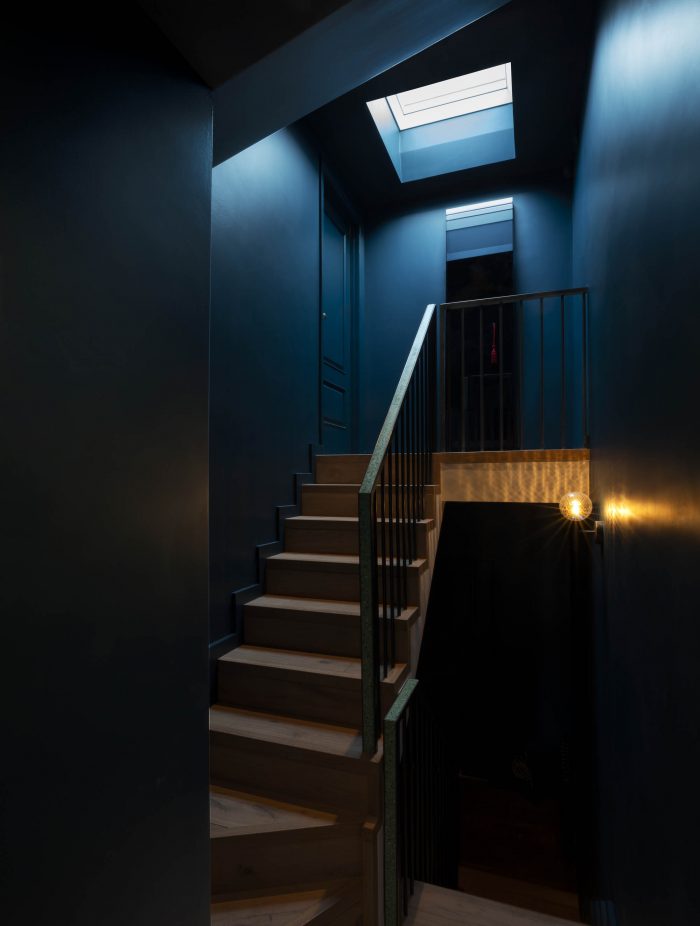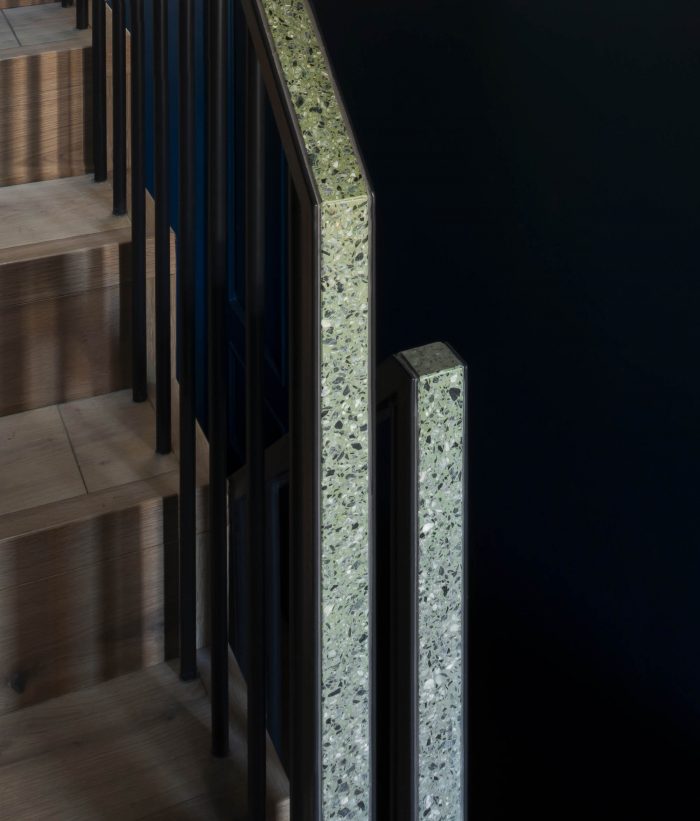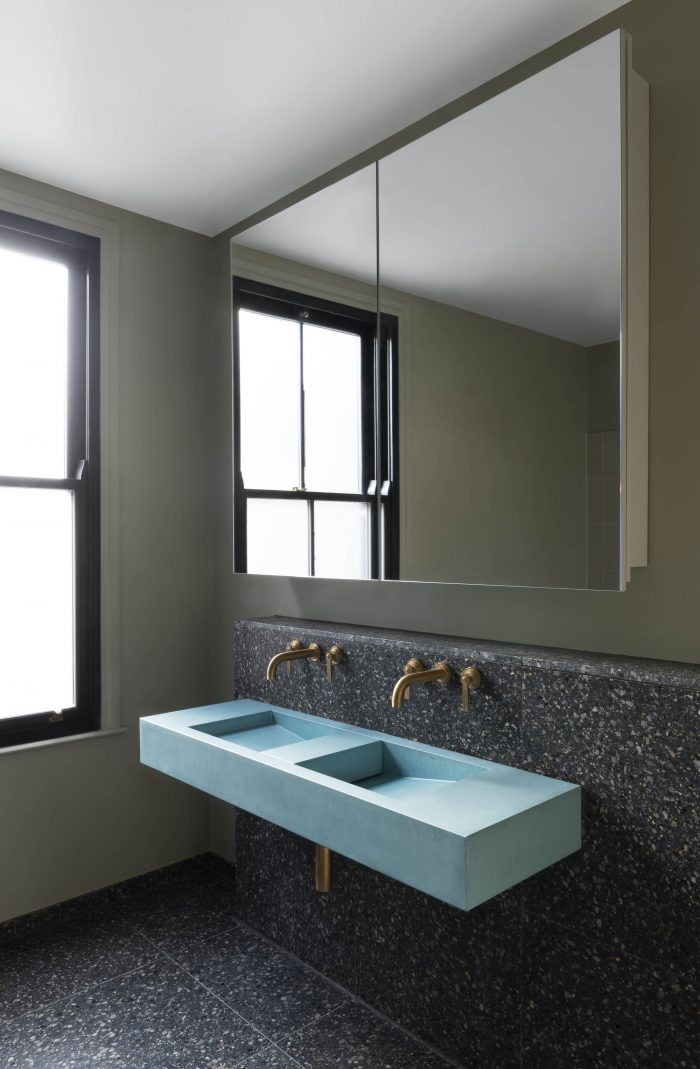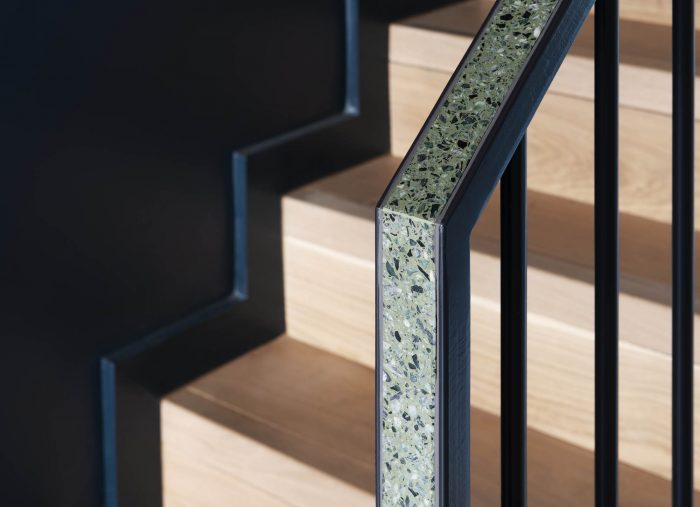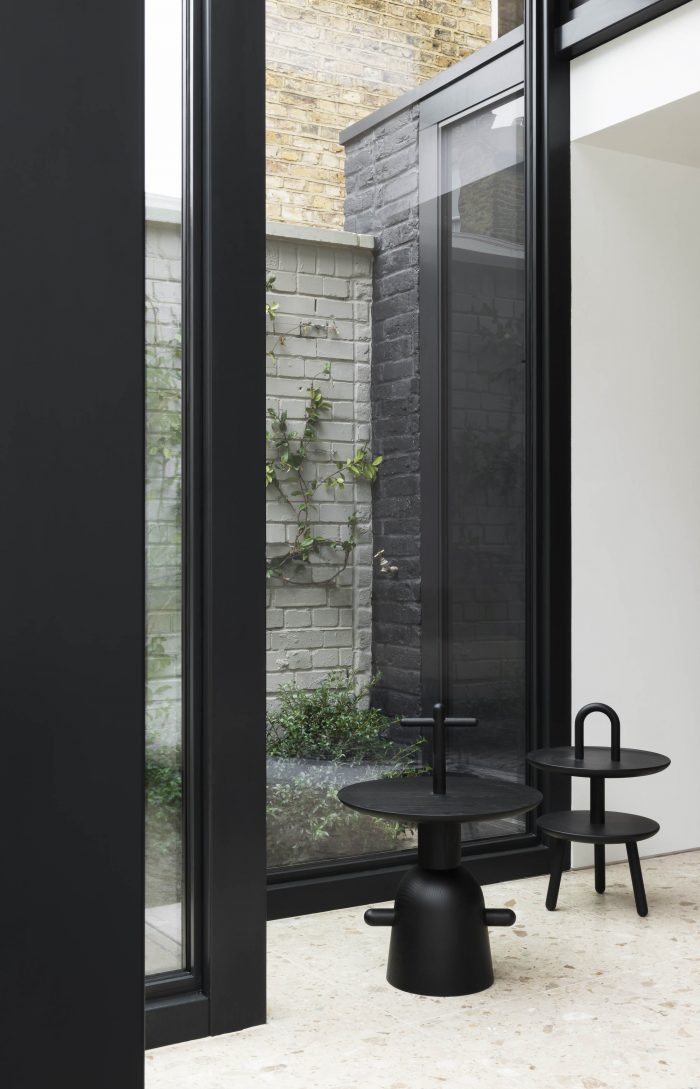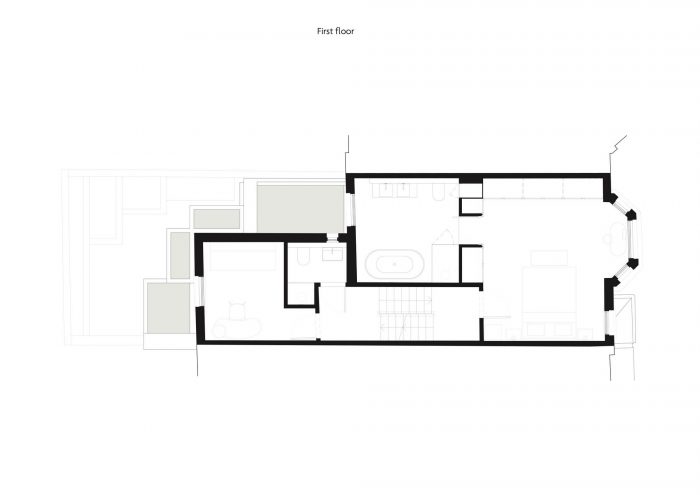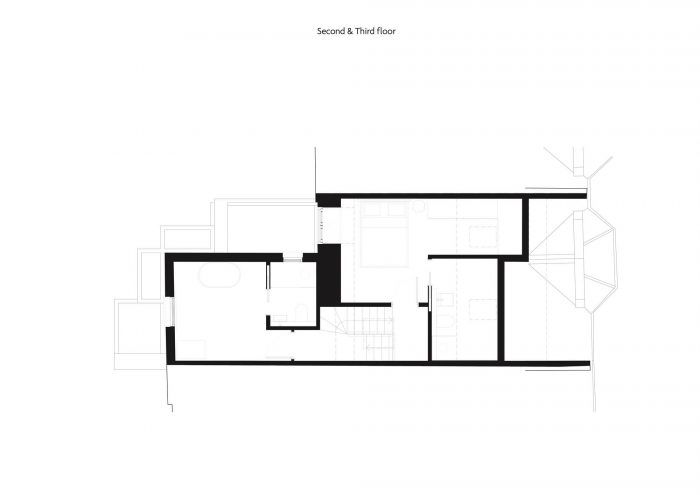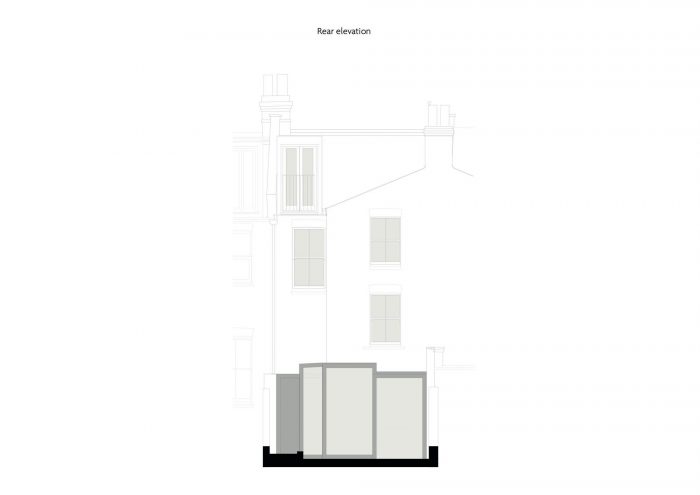Bureau de Change完成了位于伦敦南部的一栋维多利亚式梯田房屋的后部扩建和翻新,采用他们特有的质疑方式,创造了一个非常规的交错几何玻璃体的排列方式,揭示了一系列引人注目的室内空间。
Bureau de Change have completed a rear extension and refurbishment to a Victorian terraced house in South London, employing their characteristically questioning approach to produce an unconventional arrangement of interlocking geometric glass volumes which reveal a sequence of compelling interior spaces.
该实践挑战了规划规则的标准解决方案,这些规则决定了周围物业之间的45度角,而不是通过纯粹的直线形式来实现最大的包络,这些形式在边界处是交错和阶梯状的。这种复杂的设计,从场地的几何形状和邻近的建筑中汲取灵感,唤起了一种近乎新陈代谢主义的晶体生长感–体量向不同的方向挤压,一些体量位于原有房屋的下方,另一些则向外扩展。
The practice challenged standard solutions to planning rules which determine a 45-degree angle between surrounding properties, instead achieving the maximum envelope possible with purely rectilinear forms that are staggered and stepped at the boundaries. This complex design of interconnected forms drawn from the geometry of the site and its adjacencies evokes an almost Metabolist sense of crystalline growth – with volumes extruded in different directions, some sitting beneath the original house and others expanding outwards.
该结构的细节设计以技术复杂的钢架结构为特色,让人联想到博物馆的案例,将脆弱与坚固结合在一起,代表了对过去十年无框玻璃延伸的一种解脱。Bureau de Change的联合创始人Katerina Dionysopoulou解释说:”这些独特的立体主义玻璃体量让人联想到博物馆的箱子。’这些独特的立体主义玻璃体量通过其大胆的钢架结构来表达,以一种创造光和空间变化模式的方式来表达每一个边缘,当体量承受原有房屋的重量时,产生一种既轻盈又坚实的矛盾感。
The detailing of this structure features a technically complex steel-frame construction reminiscent of the museum case, combining fragility with solidity in a manner that represents an antidote to the frameless glass extensions of the past decade. Katerina Dionysopoulou, Co-Founder of Bureau de Change explains: ‘These distinctly cubist glass volumes are articulated through their bold steel-frame construction, expressing each edge in a manner that creates shifting patterns of light and space, and a paradoxical sense of both levity and solidity as the volumes bear the weight of the original house.’
直线抵消的节奏和逻辑在整个底层规划的其余部分得到了呼应,起伏的层次被精心设计,以策动景观和划分空间。联合创始人Billy Mavropoulos描述道:”从前面的厨房向下走,通过一个发现之旅,扩展部分的景色就会显现出来–这是我们住宅作品的标志。’我们不想在一眼就揭示整个空间,而是要促进空间的缓慢和深思熟虑的使用,让人感到惊喜、亲密和戏剧性。
The rhythm and logic of rectilinear offsetting is echoed throughout the rest of the ground floor plan, with undulating levels carefully designed to curate views and delineate spaces. ‘Moving down through the space from the kitchen at the front, views of the extension reveal themselves through a journey of discovery – a hallmark of our residential work,’ describes Co-Founder Billy Mavropoulos. ‘We didn’t want to reveal the whole space in one glance but foster a slow and considered use of the space that allows for surprise, intimacy and drama.’
材料的选择和照明起到了强调这个通道的作用,从厨房的黑暗围墙过渡到通往花园的明亮开放空间。室内空间和景观设计都有不同的层次,创造出既实用又好玩的壁架、台阶和边界。水磨石地板表面采用了微妙的不同色调,加强了这一阶段性的设计,用较深的色调确定了用餐和生活的不同区域,在石材与花园相接的地方则采用较浅的色调,形成了花盆和垂直表面的语言。
Material choices and lighting serve to emphasise this passage, transitioning from the darker enclosure of the kitchen towards the brighter open spaces that lead to the garden. Both the interior space and the landscaping are designed with shifting levels that create both useful and playful ledges, steps, and borders. Terrazzo floor surfaces in subtly different shades enhance this staging, identifying distinct areas for dining and living with darker tones, leading to lighter ones where the stone meets the garden to form a language of planters and vertical surfaces.
这些原则和材料的选择在房子的其余部分延续到另外两个楼层,包括在二楼创建一个新的主人和一个客人套房。定制的水磨石扶手构成了这一材料之旅的脊柱,将整个房子的空间连接起来,并在一系列视觉刺激的房间中展开,在这些房间中,质地、图形、颜色和表面处理都是根据它们的戏剧性和触感来选择的。
These principles and material choices are continued throughout the rest of the house across two further floors, including the creation of a new master and a guest suite on the second floor. A bespoke terrazzo handrail forms the spine of this material journey, linking spaces throughout the house which unfold in a sequence of visually stimulating rooms where texture, graphics, colour and finish have been selected for their theatre and tactility.
建筑师:Bureau de Change Architects
面积::160 m²
年份:2020年
摄影:Gilbert McCarragher
承包商:Argyll
景观:Tulip Landscapes
城市:伦敦
国家:英国
Architects: Bureau de Change Architects
Area: 160 m²
Year: 2020
Photographs: Gilbert McCarragher
Contractor:Argyll
Landscape:Tulip Landscapes
City:London
Country:United Kingdom

